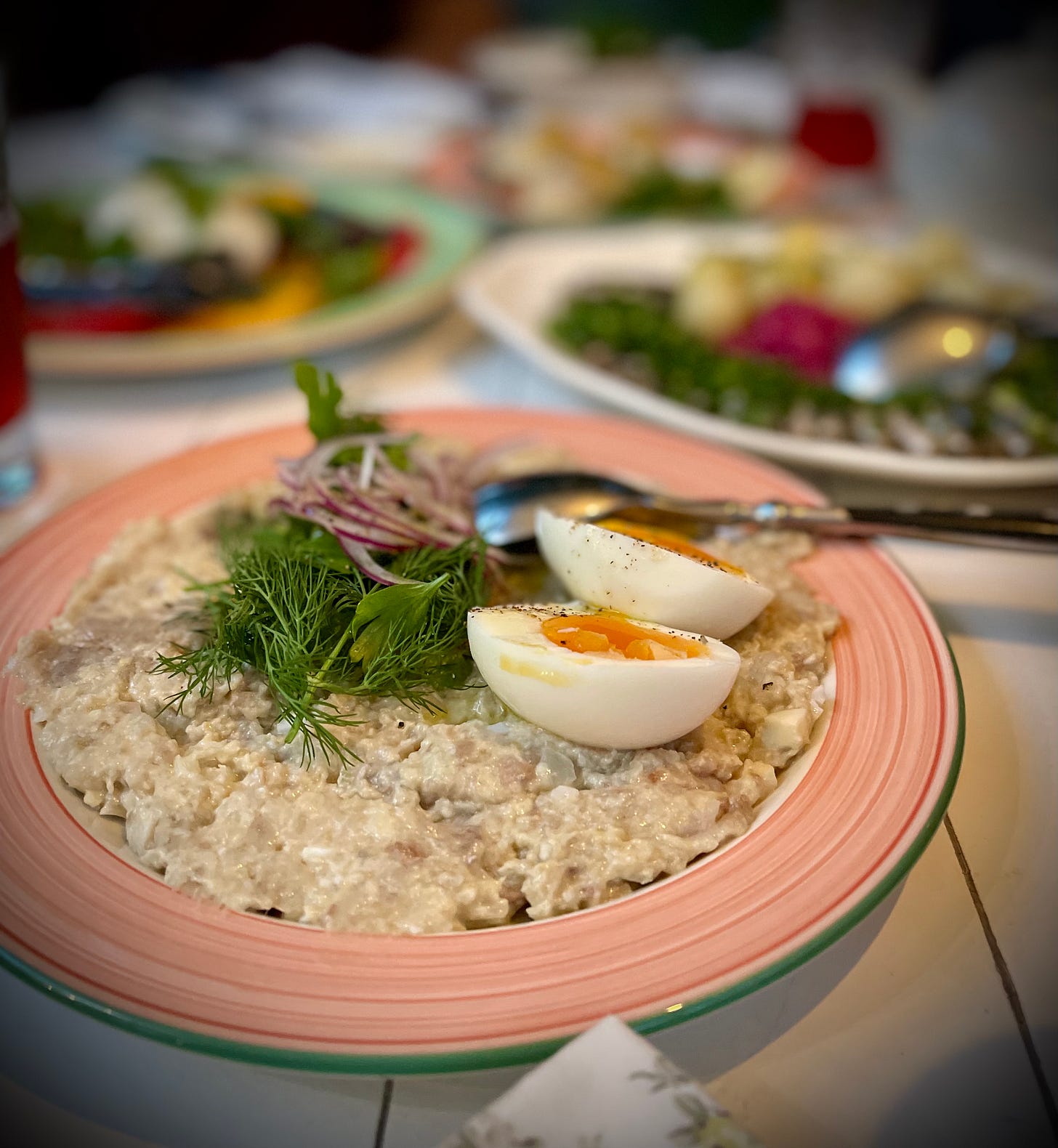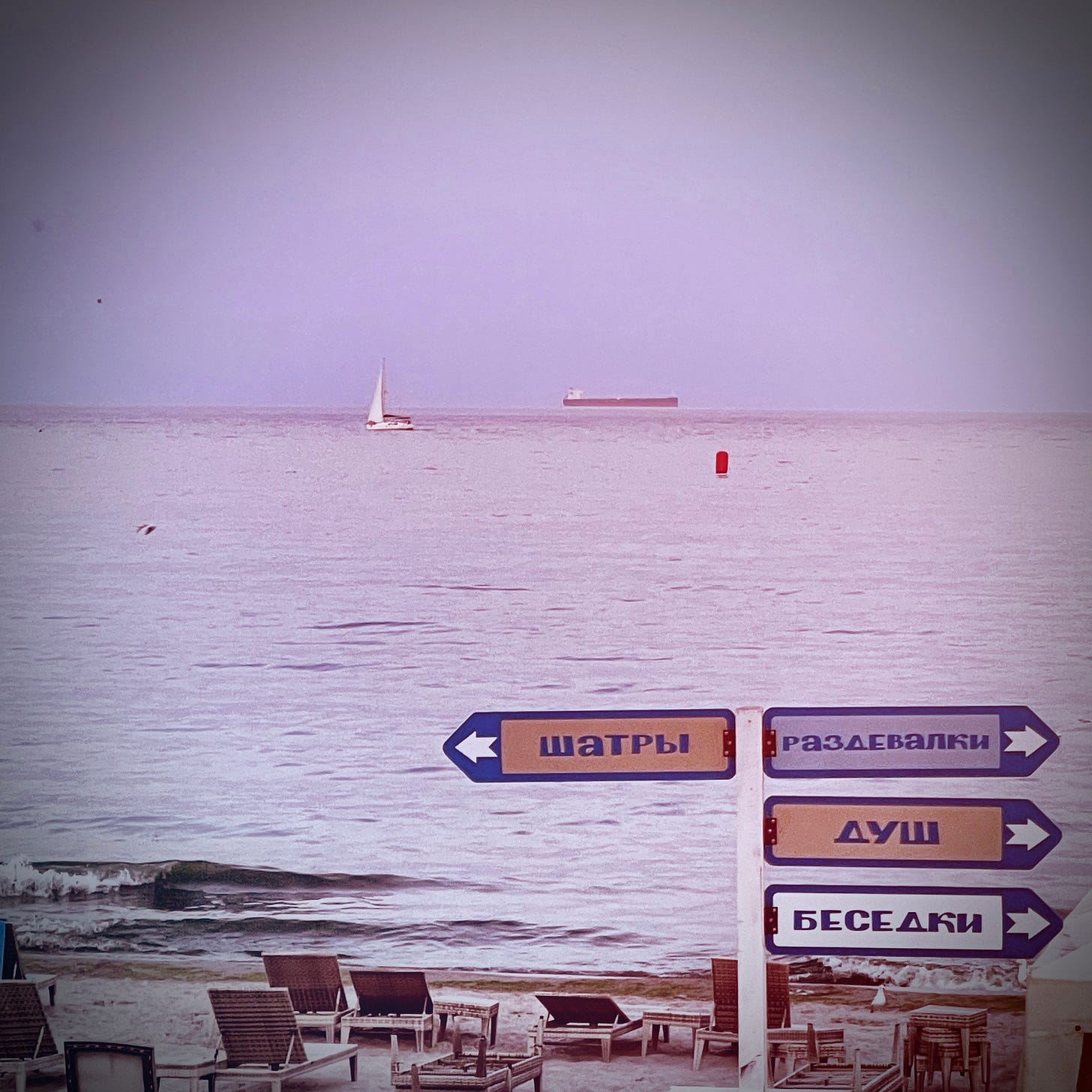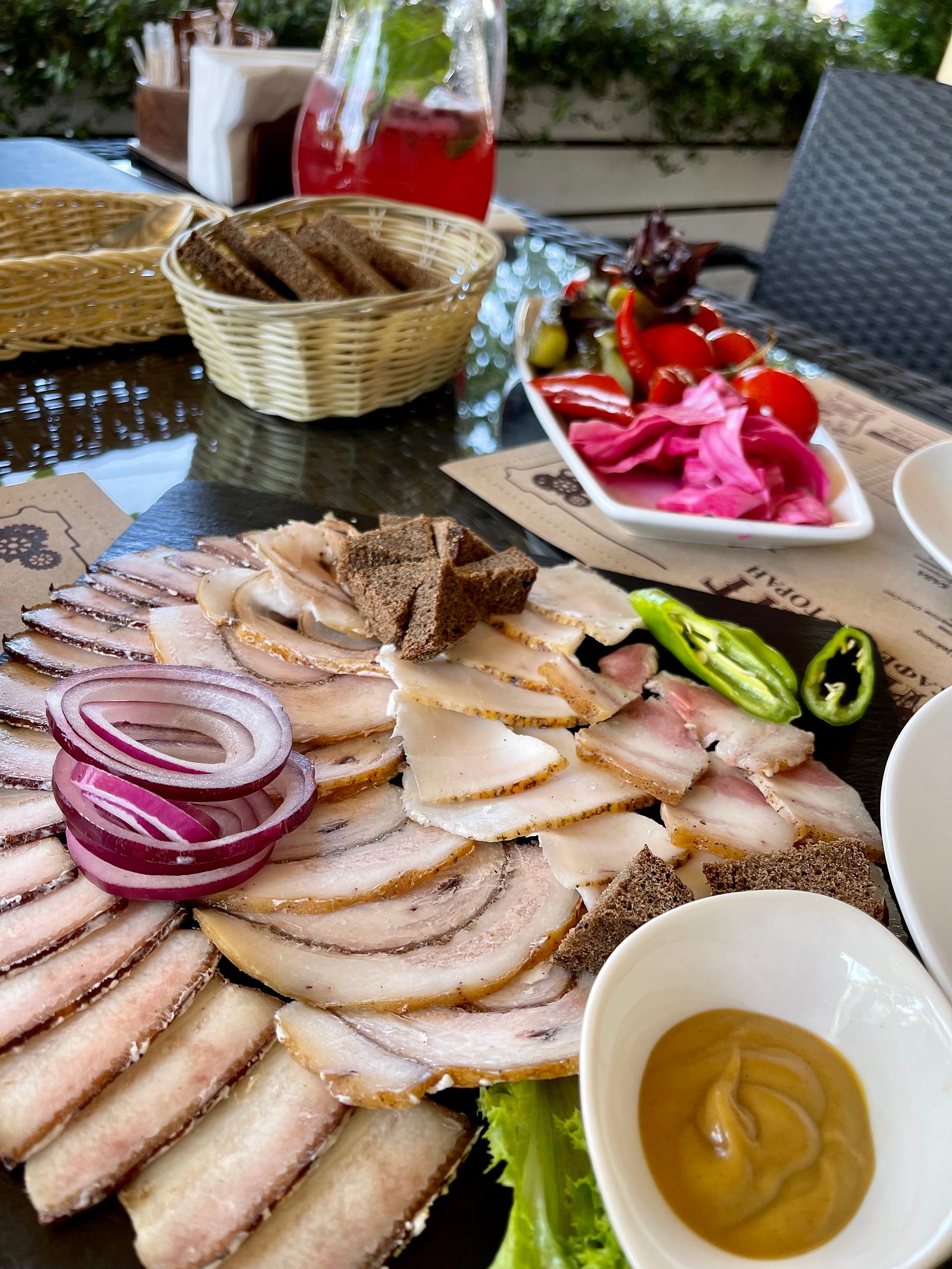August 29; Ukraine appreciation continued 💛💙
From sampling Gefillte Fish, to seeing Europe's widest river... this was my week
Happy Sunday,
Zhenya and I made it back to Kyiv today, after 10 days on the road across all of Ukraine, covering a neatly exact 3,000km and making stops in 14 cities.
Not many people without roots in this region realize how huge Ukraine actually is. With 603,628 square kilometers, it is by far the biggest country located entirely inside Europe, more than 10% larger than runner-up France, and almost twice the size of Germany.
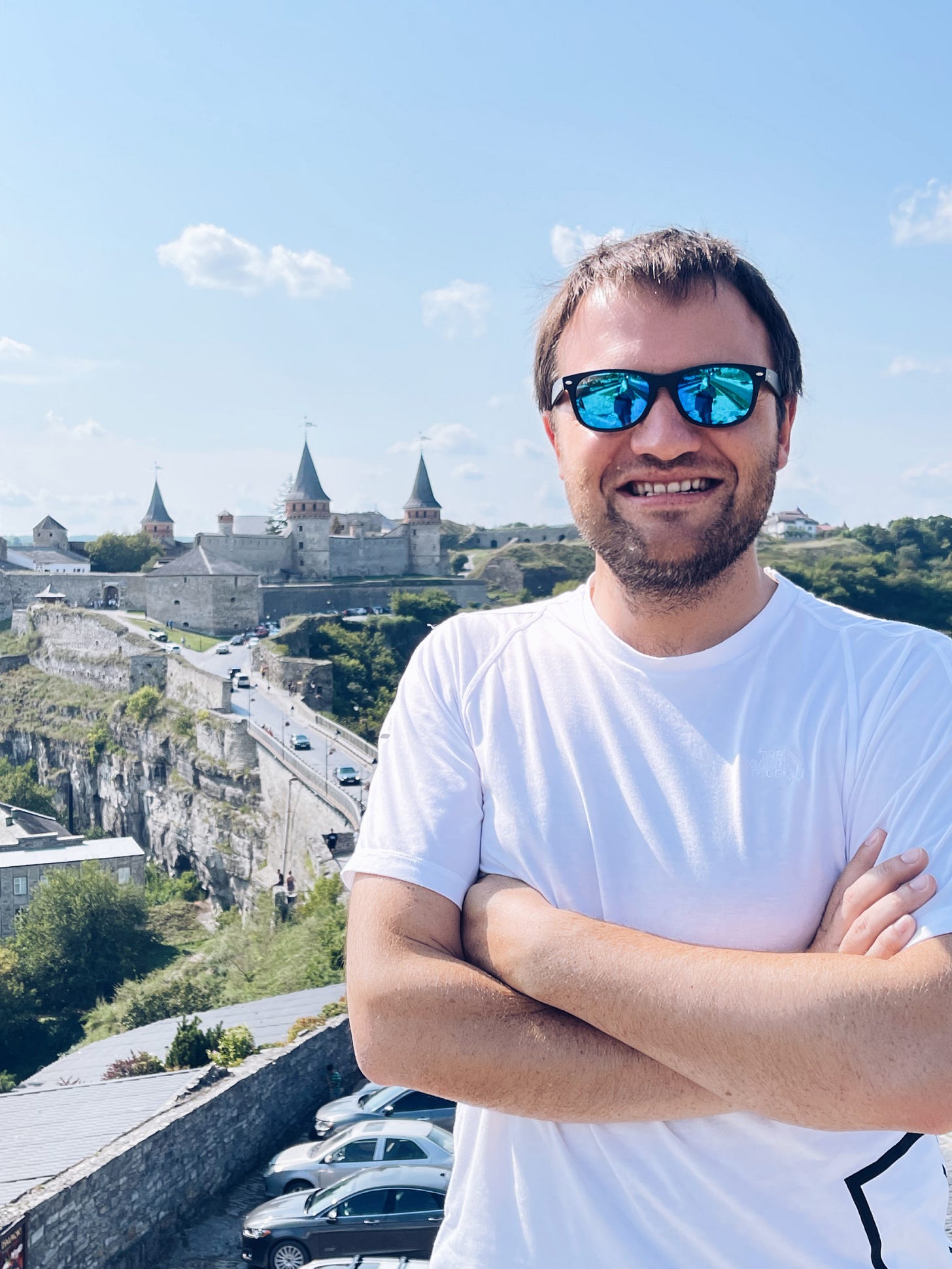
Its diversity is mind-boggling as well. From the quaint towns in the Carpathian mountains, with their Austro-Hungarian layouts and heritage, and Polish-era Catholic churches, to the endless steppes of Southern Ukraine, where you can drive for two hours without seeing any town or village. And then there are the subtropical forests of Crimea, which unfortunately are off limits today, as the peninsula is unlawfully occupied by Russia.
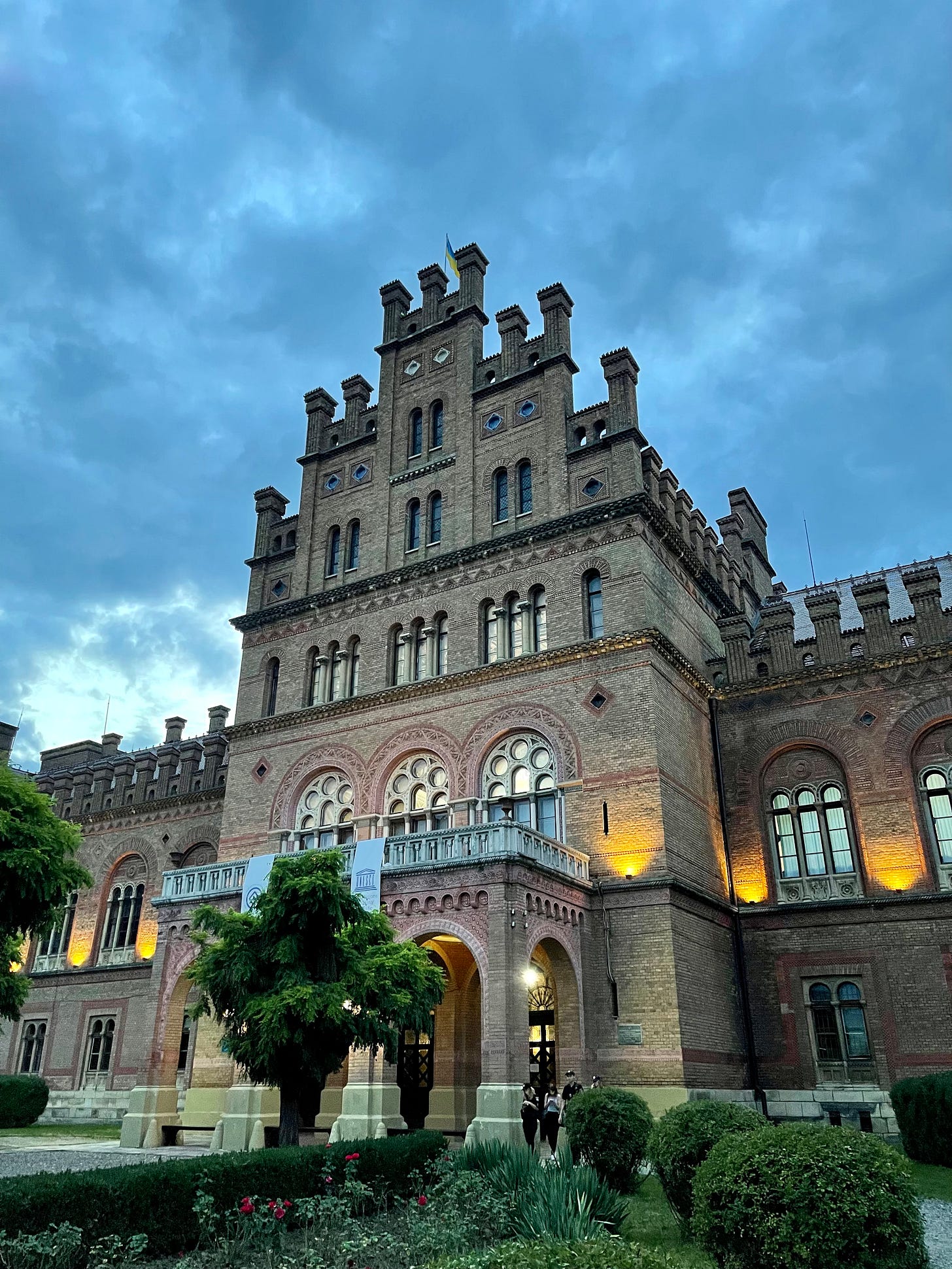
Culturally as well, it’s hard to find as much indigenous diversity in European countries, as you can uncover in Ukraine.
For one, there is the Jewish heritage. Almost all of Ukraine was within the Pale of Settlement of the Russian Empire, which led to the creation of a very distinct subculture of Ashkenazi jews, factually a state within a state, with around 10 million people that had their own language, music, literature, cuisine, and traditions. The pogroms of the Russian Empire, the Holocaust perpetrated by Nazi Germany, and Stalin’s antisemitic purges destroyed that Jewish nation, with the few survivors that remained either assimilating into mainstream Russian culture, or emigrating to US and Israel.

Today however, the Jewish influence in Ukraine is still very visible, mostly with food. Odessa is well-known as the capital of secular Jewish-Russian culture, but you can find very specific Ashkenazi dishes like Vorschmack and Gefillte Fish in restaurants all across Ukraine.
And then there is the Soviet heritage. It’s a very sensitive topic, especially today as Ukraine is fighting military aggression and occupation from Russia, but the reality is that it was Ukraine, where the Soviet Union realized a vast part of its utopian social and technological engineering projects, often bordering on insanity, and yielding a combination of some of the 20th century’s greatest social elevators, as well as some of that era’s biggest natural and human catastrophes.
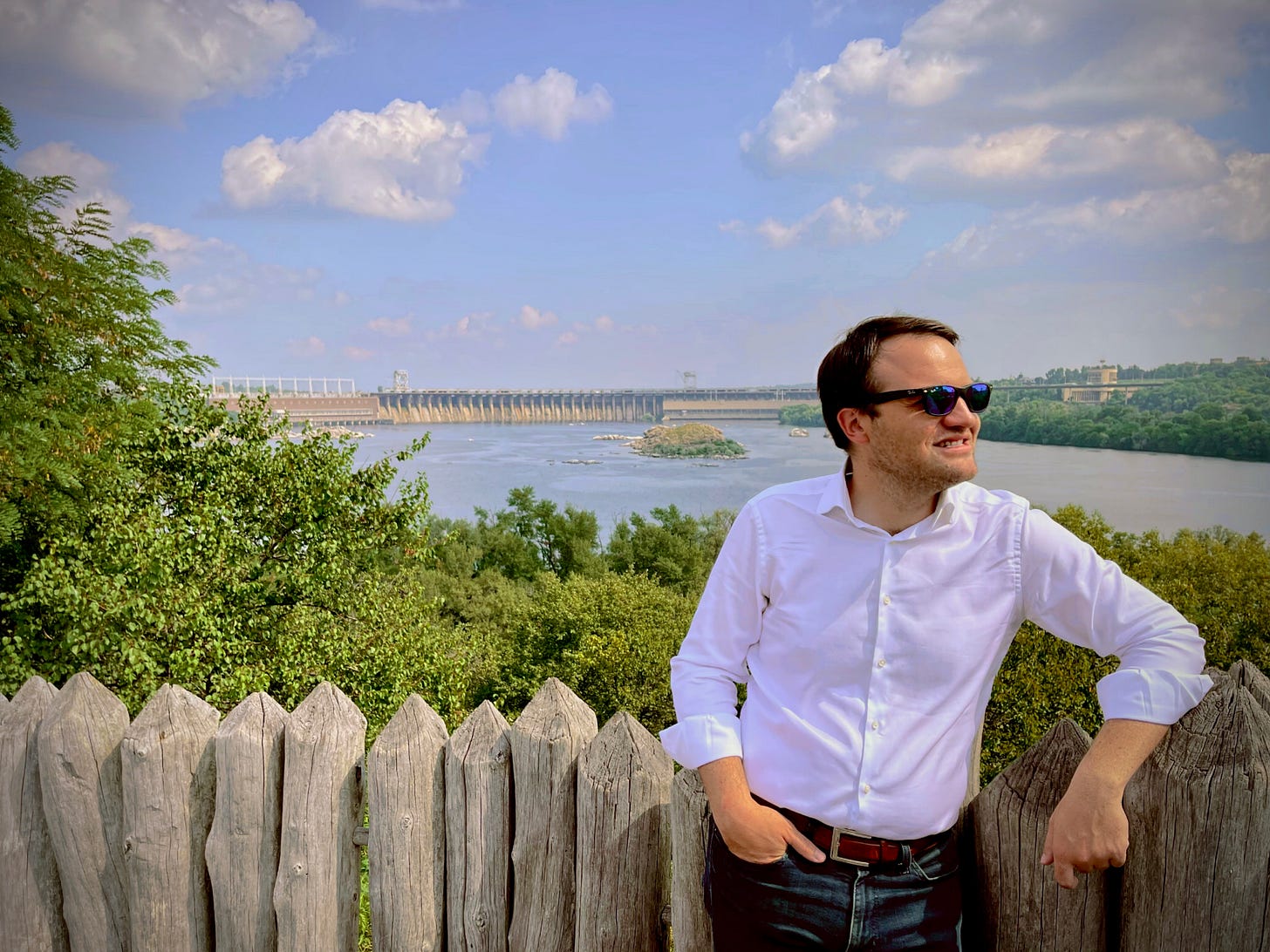
Take the river Dnipro. Before the Russian revolution, Europe’s second longest river was unnavigable, as the rocky soil of Central and Southern Ukraine formed rapids in the river that no ship could pass. The first Soviet megalomaniac “construction of the century” project in the 1920s was to build the world’s biggest hydroelectric dam at the time, beyond the rapids of the Dnipro, and a brand-new industrial city next to it, called Zaporizhzhya (literally meaning “city beyond the rapids”). Once the Dnipro Hydroelectric Dam was built (twice, as it got destroyed during WW2), ten more Dnipro super dams were built, totaling 11 in today’s Ukraine.
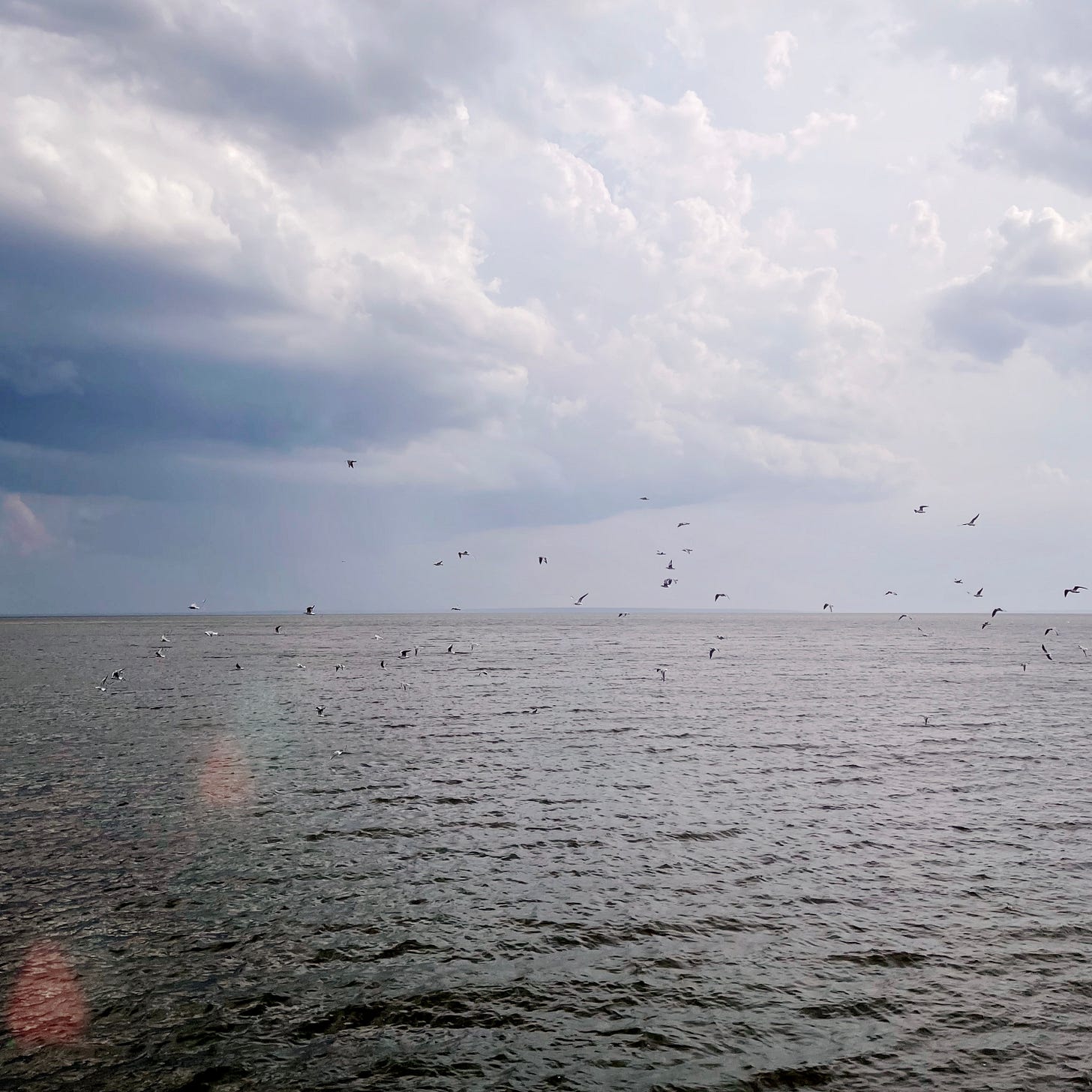
These dams drowned thousands of villages and towns that today lie on the bottom of the massively expanded Dnipro. Out of the river’s 2,200km in length, only about 100km today feature its original shores, with nearly the entire Dnipro consisting of wide lakes, sometimes so wide that you can’t see the other side.
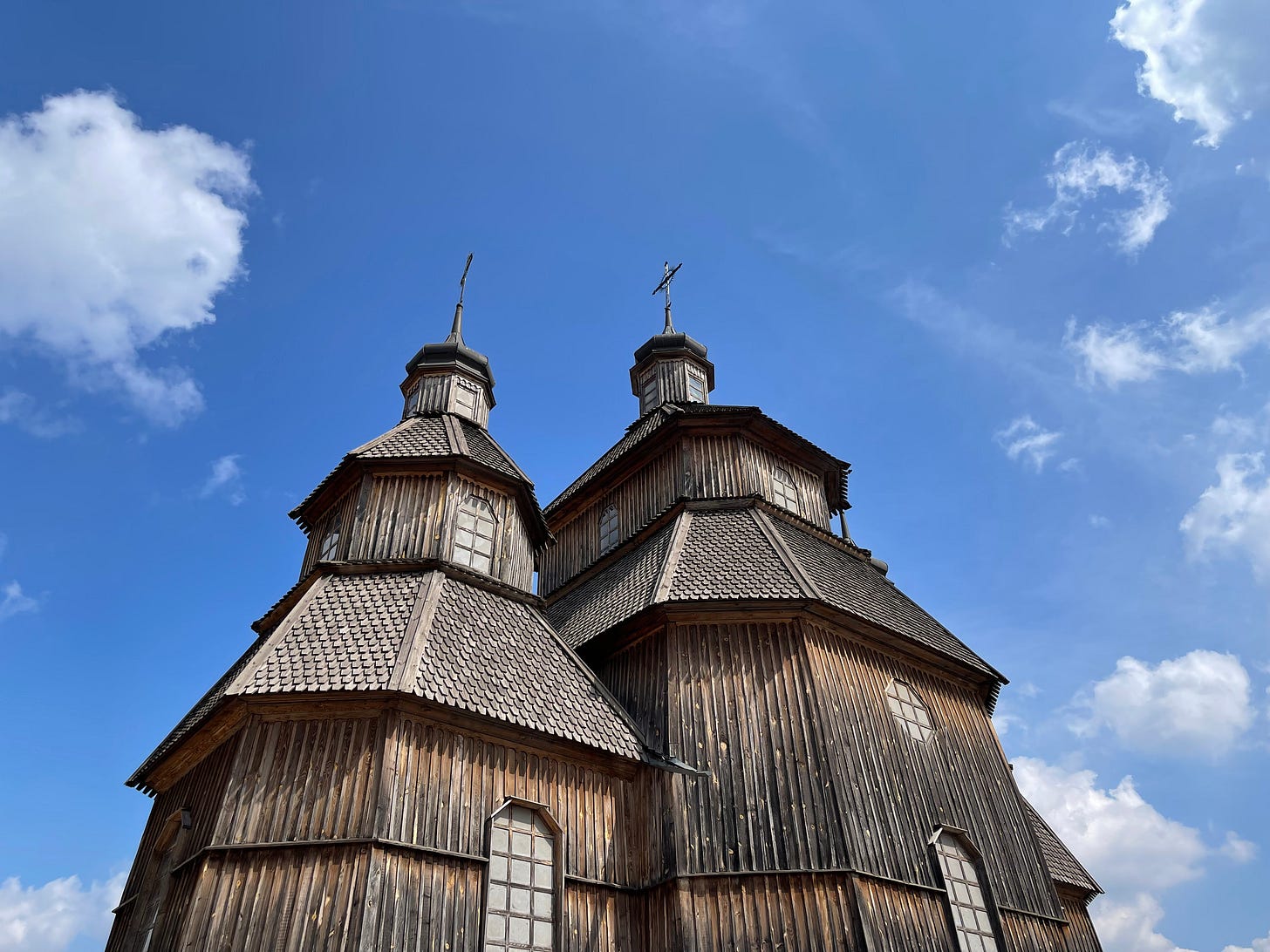
Finally, there is the beautiful Ukrainian language and culture, a miracle of human history not much different from the Zionist revival of modern Israel. An ancient Slavic culture that migrated westward over centuries from its origins in what is today Southern Russia, deliberately suppressed, outlawed, and nearly destroyed during the Russian Empire and Soviet Union, emerging today against all odds through two renaissance periods more than a hundred years apart.
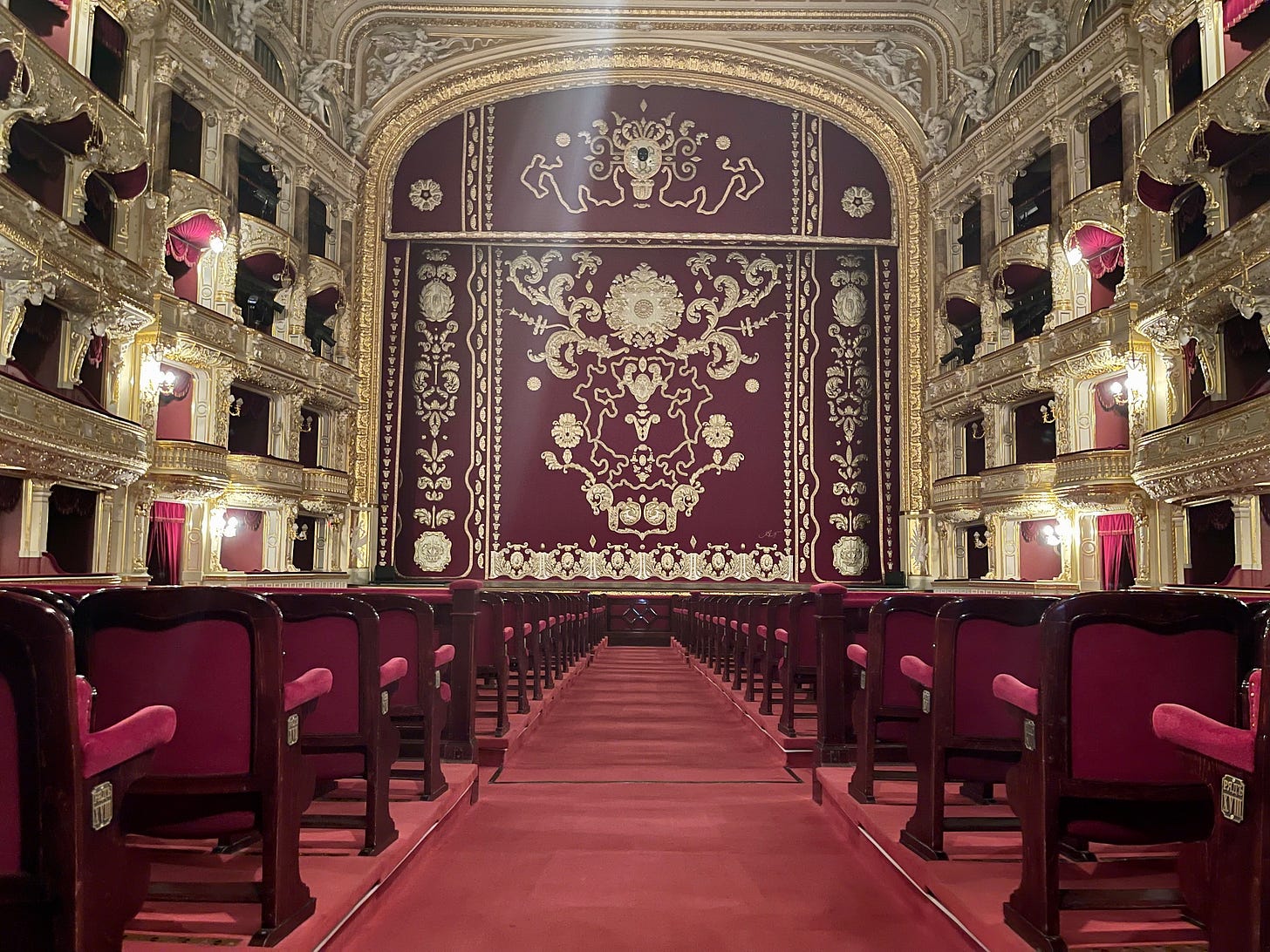
I’ve been to Ukraine dozens of times, always visiting its main cities Kyiv, Lviv, Kharkiv, and Odessa, but it was only now that I visited all of them at once, and everything in between, that I started appreciating how massive of an achievement it is, that this broken puzzle of history is retooling itself into a modern European country, learning to mold its Ukrainian, Russian, Soviet, Jewish, Tatar, and other heritages into a new, modern European national fabric.
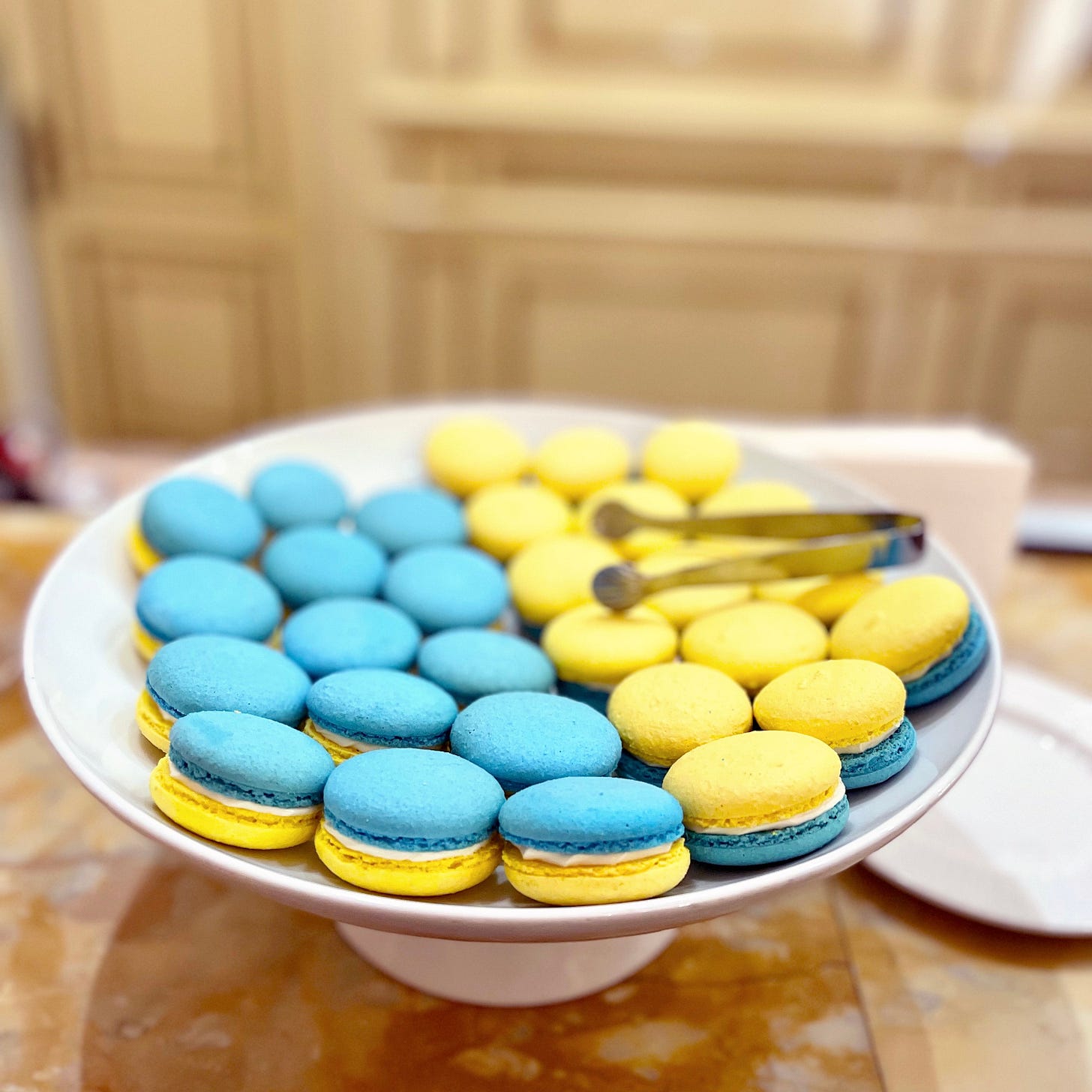
On this trip so far, Zhenya and I met about a dozen founders over dinners and lunches in Rivne, Lviv, Kamianets-Podilskyi, Odessa, Zaporizhzhya, Dnipro (city), and Kharkiv, and we have about 30 more people scheduled to show up tomorrow, as we wrap up this TRACTIONCamp tour of Ukraine with a pop-up event for our Kyiv-based participants here in Ukraine’s capital.
The entrepreneurs I’ve been meeting in Ukraine, both on this trip and over the past decade as a whole, face some of the biggest challenges and contrasts you could imagine dealing with as a founder. On the plus-side, there is the incredible engineering and creative talent, both in quality and quantity. On the minus-side, you’re dealing with a torrent of nihilism. Organizational nihilism, as your country is still new and weak, where laws, and rules in general, are yet to be learned to be valued and followed. On top of that, you have cultural nihilism, where the language you speak, the ideals you follow, and the very commitment to being here and now and doing what you do, is constantly challenged from all sides. It’s hard enough for us, who live in systems where capitalism, national identity, the value of our currencies and political processes are all cast in stone, to create successful, profitable, fast-growing businesses. Imagine doing all of that in a place where historical odds are against you, and where tomorrow you can wake up to anything between the national currency defaulting, and your city being occupied by a foreign army.
To finish up; folks, go visit Ukraine! Amazing food, wonderful people, lots of things to see and try, great discoveries to make. Still very much off the beaten path, which is such a rarity in Europe nowadays, and probably one of the last places on our continent where you can still get that feeling of being the first of your friends to learn about a UNESCO World Heritage Site, let alone visit it. And one last thing, don’t let the Ukrainians tell you their favorite story of how bad the roads are. After driving for three thousand kilometers here, I can assure you they’re totally fine.
Thanks for checking in today and talk to you next Sunday! 😇
If you enjoyed this Sunday Max update, feel free to subscribe to get it weekly in your inbox, if you haven’t yet:




